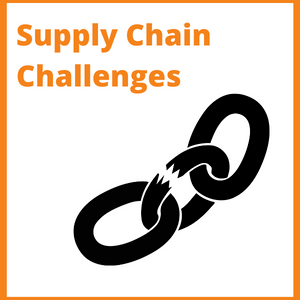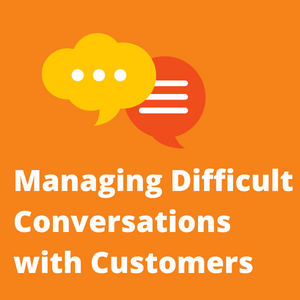
We live in the Amazon Prime generation where you don’t have to wait for anything – from same day delivery and groceries to your door, to instant access of the next episode of your favourite TV show. You can binge-order and binge-watch with very little resistance to stop you. This has built a culture of instant gratification and expectation of immediacy. There is, however, a price to pay for all of this and that is the sacrifice of human involvement in many business-to-customer relationships. As we automate and digitalise more and more, the role that humans used to play is increasingly being replaced by robots, dehumanising the interaction. Whilst this is fine when standard transactions are perfectly completed, we live in an imperfect and messy world, which often leads to complications, delays or disappointments. When this happens, without an adroit and intelligent person in place to carefully manage the situation and bring to satisfactory resolution, the relationship with the brand can suffer, sometimes to a point beyond repair.
 Online shopping exploded during the Covid period as businesses found ways to continue to trade, and shoppers substituted bricks for clicks. In the post-pandemic world, e-commerce’s popularity continues to soar unabated, but it now faces a new challenge with supply chain difficulties. The festive period of 2022 is a sound illustration of this, having been plagued by strangled supply lines and the increased weight of demand upon an already fragile global distribution infrastructure. Ordering last-minute was a white-knuckle experience as to whether you would receive your order in time or be left frustrated, disappointed, and item-less. Many consumers experienced relentless order-anxiety throughout the month of December that was compounded further by strike actions and port congestion. Naturally, many consumers have been left feeling aggrieved and disgruntled, and the relationship they had previously enjoyed with retailers and brands has been seriously jeopardized or damaged.
Online shopping exploded during the Covid period as businesses found ways to continue to trade, and shoppers substituted bricks for clicks. In the post-pandemic world, e-commerce’s popularity continues to soar unabated, but it now faces a new challenge with supply chain difficulties. The festive period of 2022 is a sound illustration of this, having been plagued by strangled supply lines and the increased weight of demand upon an already fragile global distribution infrastructure. Ordering last-minute was a white-knuckle experience as to whether you would receive your order in time or be left frustrated, disappointed, and item-less. Many consumers experienced relentless order-anxiety throughout the month of December that was compounded further by strike actions and port congestion. Naturally, many consumers have been left feeling aggrieved and disgruntled, and the relationship they had previously enjoyed with retailers and brands has been seriously jeopardized or damaged.
Much of this, however, could have been better managed through considered, continuous and honest communication, that demonstrated empathy for the customer. It’s no great revelation that people are averse to being kept in the dark, fobbed off, or lied to. What they want is transparency; to know where they stand at all times, and that the company is working diligently to satisfy the promises made, not provide unrealistic delivery dates that can’t be realised.
Even when there is no news to deliver, simple updates such as “we are working on getting your goods to you” or “you’ve not been forgotten” go a very long way in maintaining the health of the relationship with the customer.
The public largely understand the challenges that brands are facing in regard to order fulfilment at present and are widely sympathetic. So long as they feel informed, in control and respected, many customers will forgive a delayed parcel, wrong item, or minor account error. Honesty is a powerful currency in commerce.
 Some businesses are avoiding uncomfortable conversations or addressing issues head on because they’re either hoping the challenges will go away, they don’t have the answers, or they don’t know how to communicate the problem to the customer properly. Having difficult conversations isn’t easy for anybody, but burying our heads in the sand exacerbates rather than solves the problem. People are generally reasonable. Pre-empting the problem can save time, stress, and money.
Some businesses are avoiding uncomfortable conversations or addressing issues head on because they’re either hoping the challenges will go away, they don’t have the answers, or they don’t know how to communicate the problem to the customer properly. Having difficult conversations isn’t easy for anybody, but burying our heads in the sand exacerbates rather than solves the problem. People are generally reasonable. Pre-empting the problem can save time, stress, and money.
To address this, firstly, it is important for a business to acknowledge that there is a problem to begin with – whether it is in the supply chain, in the delivery logistics, or any other area of fulfilment. This needs to appropriately communicated to the customer, with an apology and a promise that you are working hard to resolve the issue as soon as possible. By thinking ahead and proactively addressing the situation, businesses can protect their relationship with the customer and head off any complaints before they arise. They can also boost their reputation if they handle these situations the right way, frequently enough.
For example, a short note to say “sorry your delivery is late. We’d like to show we’re sorry by offering you 5% off your next order” or “we are sending you a free gift to let you know how valued you are” can go along way to win customers over when delivering unexpected news or fallen short of customer expectations.

 In turbulent times such as these, understanding what good customer experience is and then tirelessly working to deliver it at every level of the company has become crucial. Organisations should put themselves in their customer’s shoes and look at the entire customer journey through their eyes. This will help create a deeper layer of empathy, as well as highlighting areas of potential frustration that can be avoided or fixed. Everyone in the business should be encouraged to consider how easy it is to do business with you and identify where pain points exist and how they can be resolved to the benefit of the customer. Both online and offline journeys, from initial click to post-purchase review, should be critically reviewed, and bumps, hindrances or faults should be unpackaged and ironed out, so the customer experience is seamless from start to finish.
In turbulent times such as these, understanding what good customer experience is and then tirelessly working to deliver it at every level of the company has become crucial. Organisations should put themselves in their customer’s shoes and look at the entire customer journey through their eyes. This will help create a deeper layer of empathy, as well as highlighting areas of potential frustration that can be avoided or fixed. Everyone in the business should be encouraged to consider how easy it is to do business with you and identify where pain points exist and how they can be resolved to the benefit of the customer. Both online and offline journeys, from initial click to post-purchase review, should be critically reviewed, and bumps, hindrances or faults should be unpackaged and ironed out, so the customer experience is seamless from start to finish.
 Whilst each situation is unique, there are some guidelines for best practice when it comes to managing custom expectations during times of constricted supply lines:
Whilst each situation is unique, there are some guidelines for best practice when it comes to managing custom expectations during times of constricted supply lines:
- Make sure your communication channels are fully-functional, teams have been appropriately briefed on how to handle concerns and complaints, and the messaging is consistent across the board. You also want to ensure you’re communicating in the way your customer wants to hear from you, and in the way they have indicated that they prefer (email, text, phone etc…).
- Maintain a variety of communication channels such as email, SMS, social media updates or website chat boxes. For instore in-store or onsite, ensure team members are fully trained and equipped to handle challenging situations (both in the moment and afterwards). If you are short staffed, have paper and pens and feedback stations available.
- Ensure a crisis communications and operations strategy is in place and that all customer-facing team members are comfortable and confident using it.
- Get well ahead of potential blockage dates such as Christmas. You could incentivise ordering in good time by offering discounts for early delivery.
- Ensure your stock system operates effectively and either prevents customers from ordering items that are out of stock or flags up internally when numbers are hitting a critical level so that your internal team can react.
- This is the time to ensure you know your market incredibly well. Create digital prompts on your website or other sales channels that might suggest an alternative product that is available to ship immediately and will meet customer need.
- If you sell physical goods, you’ll likely well know when typical blockages might occur (seasonality, work schedules, special holidays etc…). Having a range of freight suppliers to ensure your transportation system is robust is essential and makes your businesses far more resilient than relying on one freight carrier.
- Update your website or your socials constantly to ensure the latest and most accurate information is available to the public.
When something unexpectedly goes wrong, acknowledge it and take responsibility!










